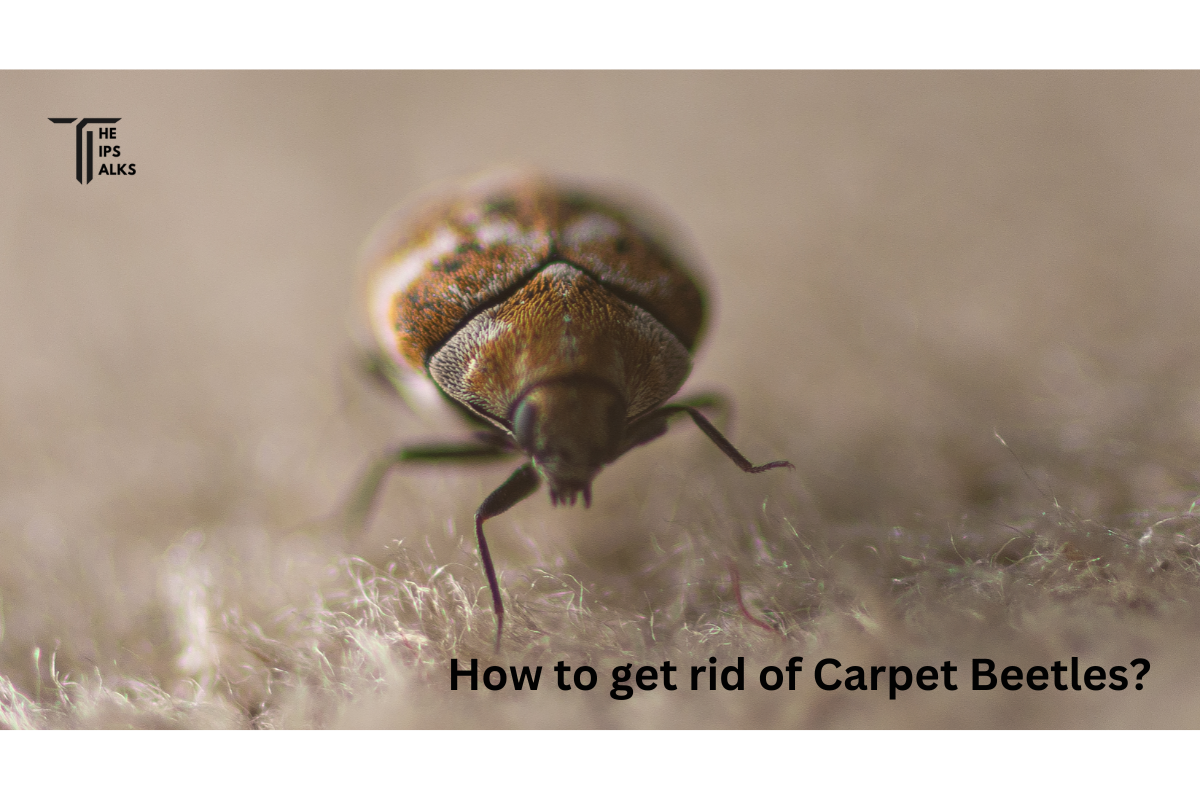If you are thinking that how to get rid of carpet beetles then you are reading the right article. Carpet beetles might be small, but the damage they cause can be significant. These pests feed on natural fibers like wool, silk, and leather, ruining carpets, furniture, and clothing. If left untreated, they can spread quickly, making it harder to control the infestation.
Getting rid of carpet beetles requires a combination of deep cleaning, targeted treatments, and preventive measures. The good news is that with the right approach, you can eliminate them and keep them from coming back.
In this article, we’ll cover how to identify carpet beetles, effective removal methods, and steps to prevent future infestations.
What Are Carpet Beetles?
Carpet beetles belong to the Dermestidae family, and their larvae cause the most damage. These pests are commonly found in homes, feeding on organic materials. They thrive in dark, undisturbed areas, such as closets, storage boxes, and under furniture.
Types of Carpet Beetles
- Varied Carpet Beetle (Anthrenus verbasci)
- Oval-shaped, about 1/8 inch long
- Covered in white, yellow, and brown scales
- Commonly found in homes, feeding on wool, silk, and feathers
- Furniture Carpet Beetle (Anthrenus flavipes)
- Similar to the varied carpet beetle but slightly larger
- Feeds on furniture upholstery, clothing, and stored items
- Black Carpet Beetle (Attagenus unicolor)
- Shiny black or dark brown, elongated body
- Feeds on wool, fur, and stored food products
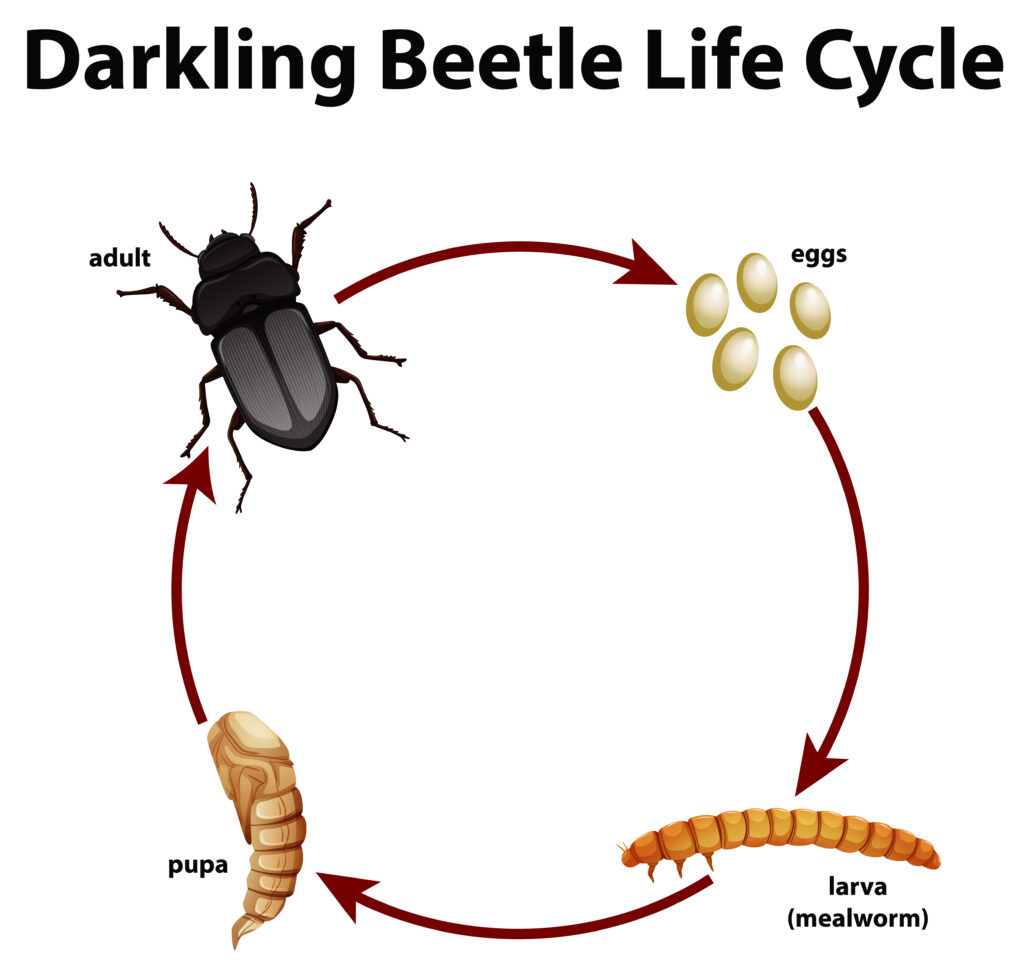
Life Cycle of Carpet Beetles
Understanding the life cycle helps in eliminating them effectively. Carpet beetles go through four stages:
- Eggs – Laid in dark, undisturbed places like closets, furniture, and baseboards
- Larvae – The most destructive stage; these tiny, hairy caterpillar-like pests eat natural fibers
- Pupa – The transition stage before becoming adults
- Adults – Do not damage fabrics but lay eggs, continuing the cycle
A single female carpet beetle can lay 50–100 eggs, which hatch in 1–2 weeks. If left unchecked, they multiply quickly, leading to severe infestations.
Signs You Have a Carpet Beetle Infestation
Carpet beetles can be tricky to spot, as they often hide in dark, undisturbed areas. However, their presence becomes evident through the damage they leave behind. If you notice unusual fabric wear, small beetles near windows, or tiny larvae crawling around, it’s time to take action. Here are some common signs of an infestation:
- Irregular holes in fabric – Clothing, carpets, and upholstery may have scattered or patchy damage.
- Larvae or shed skins – Fuzzy, bristly larvae and tiny brown shed skins often appear near infested items.
- Adult beetles on window sills – These pests are drawn to light and may gather near windows and light fixtures.
- Bare patches on rugs and upholstery – Wool rugs, fur items, and upholstered furniture may show signs of thinning or missing fibers.
- Tiny fecal pellets – Carpet beetle larvae leave behind small, sand-like droppings near food sources.
How Carpet Beetles Can Damage Your Carpet?
Carpet beetles target natural fibers, making wool, silk, and cotton carpets their ideal feeding grounds. Their larvae feed on these materials, gradually breaking them down and causing irreversible damage. Since they prefer dark, undisturbed areas, infestations often start beneath furniture, along edges, or in storage spaces where carpets receive little foot traffic.
Infestations become more severe when left unchecked, leading to widespread fiber loss and weakened carpet structure. Unlike regular wear and tear, the damage from carpet beetles appears as patchy bald spots, loose fibers, and uneven thinning. Over time, this destruction can ruin the carpet’s appearance and make replacement the only option.
- Irregular bald patches – Unlike uniform wear, beetles create scattered, uneven damage across the carpet.
- Weakened fibers and shedding – Larvae consume the carpet backing, causing excessive fiber loss.
- Damage concentrated in hidden areas – Most infestations start under furniture, along baseboards, or in storage spaces.
- Shed skins and debris accumulation – Larvae leave behind discarded skins and waste, which can contribute to allergies.
- Spreading damage – If untreated, beetles move from carpets to upholstery, clothing, and stored fabrics.
Early detection is key to minimizing damage, so regular cleaning and close inspection of hidden areas can help protect carpets from long-term harm.
How to Get Rid of Carpet Beetles – 4 Steps to Deal with it
Eliminating carpet beetles requires a thorough and consistent approach. Since these pests often hide in carpets, furniture, and storage areas, a single treatment won’t be enough. You’ll need to combine deep cleaning, targeted treatments, and preventive measures to break their life cycle. Acting quickly can help minimize fabric damage and prevent the infestation from spreading to other areas of your home. Follow these steps to remove carpet beetles and stop them from returning.
Step 1: Deep Clean Your Home
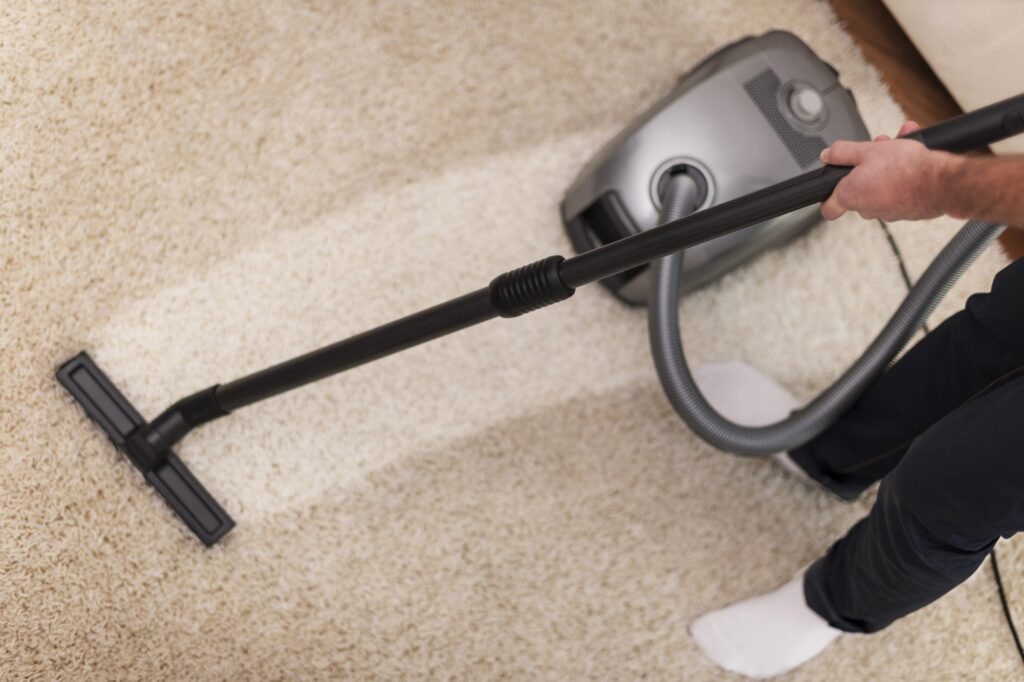
Carpet beetles thrive in dust, lint, and pet hair, so maintaining a clean home is your first line of defense. Regular vacuuming, washing fabrics, and steam cleaning help eliminate food sources and kill larvae before they become a bigger problem. Since these pests hide in dark corners and undisturbed areas, a surface-level clean won’t be enough—you’ll need to be thorough.
- Vacuum thoroughly – Focus on carpets, rugs, furniture, and baseboards. Use an attachment to clean cracks and crevices where larvae may hide.
- Wash fabrics in hot water – Clean bedding, curtains, and clothing in hot water (above 120°F/49°C) to kill larvae and eggs. Dry on high heat for at least 30 minutes.
- Wash infested clothing, bedding, and curtains in hot water (above 120°F/49°C).
- Dry them on high heat for at least 30 minutes to kill eggs and larvae.
- Dry-clean wool and delicate fabrics that can’t be washed.
- Steam clean upholstery and carpets – High temperatures kill carpet beetles at all life stages. This is especially useful for sofas, rugs, and other fabric-based furniture.
- Steam kills carpet beetle larvae and eggs instantly.
- Use a high-temperature steam cleaner on carpets, upholstery, and curtains.
Step 2: Remove Infested Items
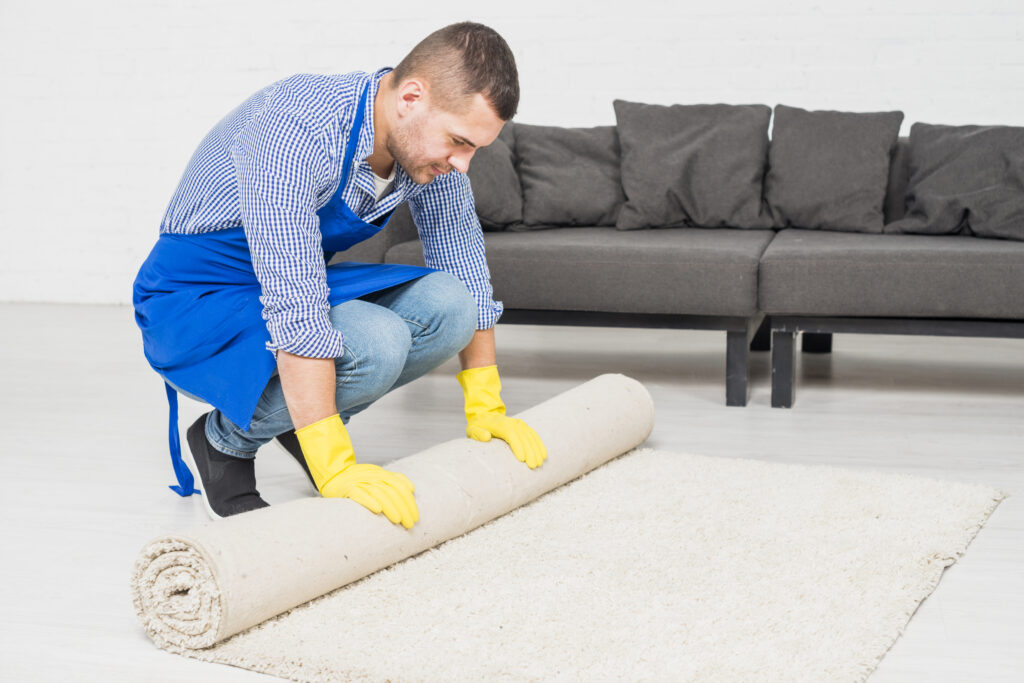
If you’ve spotted carpet beetle damage on clothing, blankets, or furniture, it’s important to act fast. Some items can be salvaged, while others may need to be discarded. Since larvae feed on natural fibers, stored fabric-based items are at a higher risk of infestation. Removing infested items helps eliminate beetles before they spread to other areas.
- Inspect storage areas – Check closets, boxes, and under furniture for infested clothing, blankets, or upholstery.
- Freeze salvageable items – Place infested clothes, rugs, or fabric items in a sealed bag and freeze for at least 48 hours to kill beetles and eggs.
- Dispose of heavily infested items – If an item is beyond saving, seal it in a plastic bag and discard it outside to prevent further infestation.
Step 3: Use Insecticides and Natural Remedies
Once you’ve removed beetles and larvae through cleaning, you’ll need additional treatments to eliminate any remaining pests. Depending on your preference, you can use insecticides for a fast-acting solution or opt for natural remedies to control the infestation without harsh chemicals.
How to Get Rid of Carpet Beetles with Insecticides
Chemical treatments are effective in killing carpet beetles at all life stages. However, they should be used carefully, especially in homes with children or pets. Choose insecticides specifically labeled for carpet beetles and apply them in infested areas like carpets, baseboards, and closets.
- Use a residual insecticide – Look for sprays containing cyfluthrin, bifenthrin, or deltamethrin, which are effective against larvae and adult beetles.
- Apply to targeted areas – Focus on carpets, upholstery, and storage spaces where beetles are likely to hide. Avoid spraying directly on clothing.
- Consider foggers for severe infestations – If beetles have spread widely, a household insecticide fogger may help eliminate them.
How to Get Rid of Carpet Beetles Naturally
If you prefer a chemical-free approach, natural remedies can help control carpet beetles effectively. While they may take longer to work than insecticides, they provide a safer alternative for households with pets and children.
- Boric acid powder – Lightly sprinkle boric acid on carpets and furniture, leave for a few hours, then vacuum thoroughly.
- Diatomaceous earth (DE) – This natural powder dehydrates larvae and beetles. Use food-grade DE and apply it in problem areas.
- Essential oil sprays – Mix peppermint or neem oil with water and spray along baseboards, closets, and upholstery to repel carpet beetles.
Also Try This Natural Spray: Check it out Now
Step 4: Seal Entry Points
Even after eliminating an infestation, carpet beetles can return if they find a way back inside. These pests often enter homes through windows, vents, or tiny cracks in walls. Sealing entry points helps prevent future infestations and keeps your home protected in the long run.
- Inspect doors and windows – Ensure all windows and doors have proper seals and screens to prevent beetles from entering.
- Seal cracks and gaps – Use caulk to fill in any cracks around baseboards, vents, or wall openings where beetles might hide.
- Check second-hand furniture – Before bringing used rugs, furniture, or clothing into your home, inspect them for signs of carpet beetles.
How to Get Rid of Carpet Beetles Permanently?
Eliminating carpet beetles is only half the battle—the real challenge is ensuring they don’t return. Since these pests thrive in undisturbed areas with natural fibers, regular cleaning and proper storage are essential for long-term protection. By maintaining a beetle-proof environment and sealing entry points, you can prevent future infestations and keep your home pest-free.
- Vacuum regularly – Clean carpets, furniture, and baseboards at least once a week to remove larvae and eggs.
- Store clothing and fabrics properly – Keep seasonal clothing, wool, and fur items in airtight containers or sealed garment bags.
- Use natural repellents – Place cedar blocks or lavender sachets in closets and drawers to deter beetles.
- Inspect new items before bringing them inside – Check second-hand furniture, rugs, and clothes for any signs of infestation.
- Seal cracks and gaps – Use caulk to block entry points around windows, doors, and vents.
- Keep dry food sealed – Store grains, pet food, and pantry items in airtight containers to prevent beetles from feeding on them.
- Use sticky traps – Place pheromone-based traps near windowsills and storage areas to monitor and catch adult beetles early.
When to Call a Pest Control Professional?
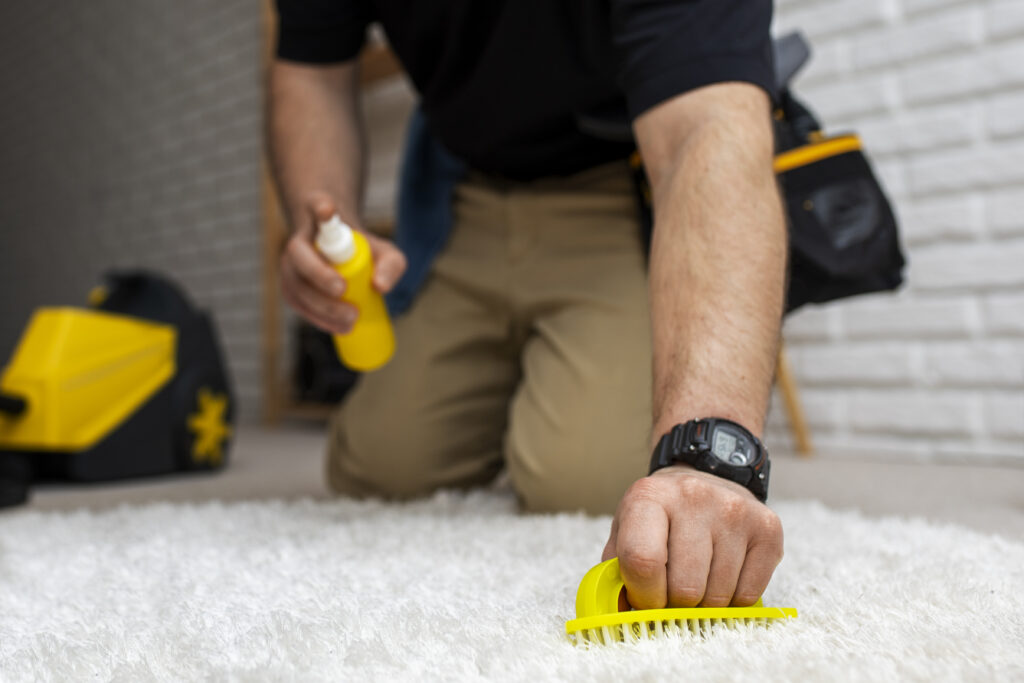
If carpet beetles keep coming back despite your efforts, professional extermination may be necessary. Pest control experts use targeted treatments like:
- Residual insecticides for long-term protection
- Fumigation for severe infestations
- Heat treatments to kill all life stages of carpet beetles
Hiring an expert ensures complete eradication, especially in large infestations.
Final statement
Carpet beetles might be sneaky, but they don’t stand a chance when you take the right steps. A combination of deep cleaning, targeted treatments, and preventive measures can help you get rid of them for good. The key is consistency—regular vacuuming, proper storage, and sealing entry points will keep these pests from making a comeback.
If you’ve spotted the signs of an infestation, don’t wait until the damage gets worse. Act fast, follow the steps outlined, and reclaim your carpets, furniture, and fabrics before these tiny troublemakers take over. A beetle-free home is possible—you just need to stay one step ahead!

